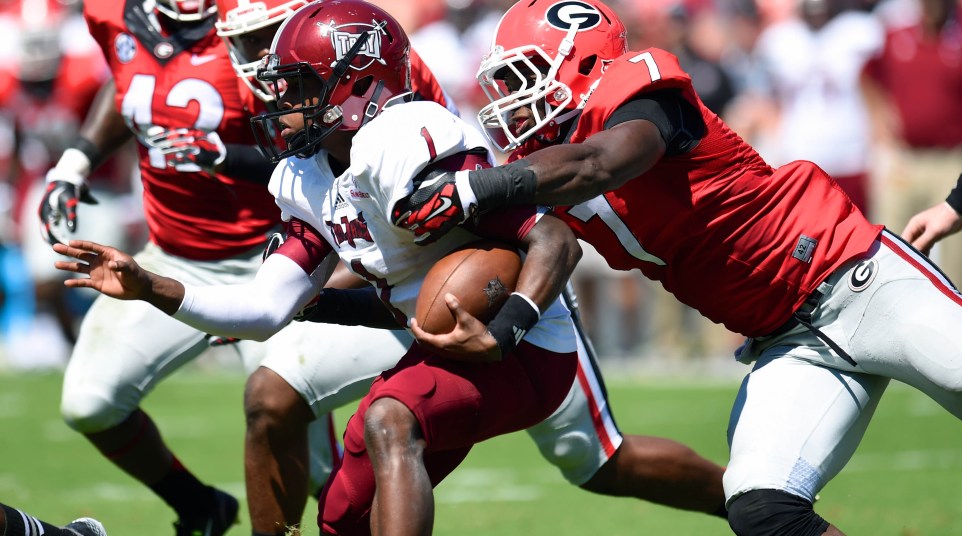Maintaining terrific turnover margin crucial for Georgia
For all of its high-fallutin’ technological innovations, complex schemes and dazzling array of on-field moves, football remains a simple game.
The less you turn the ball over and the more mistakes you force from your opponents, the greater your chance of victory.
It’s a winning formula that Georgia mastered in 2014, with a very favorable turnover ratio of better than 2 to 1. The Bulldogs forced 29 turnovers in 2014 (13 fumbles, 16 interceptions), while committing a modest 13 turnovers (seven fumbles lost, six interceptions).
The 13 fumble recoveries by UGA’s defense equaled Missouri for second place among SEC teams, while the 16 picks put the Dawgs in a four-way tie for second with Florida, Mississippi State and Tennessee in league standings.
Sophomore cornerback Malkom Parrish said focusing on the ball has become a primary defensive tenet since defensive coordinator Jeremy Pruitt’s arrival last year.
“We emphasize (turnovers) every day,” he said, according to a recent Macon Telegraph report. “There’s not a day we’re out that goes by that we don’t emphasize turnovers, getting the ball out. Every rep we go out, that is our main goal, get the ball.”
How remarkable was the amount of turnovers Georgia forced last season? Just consider that in 2013, the defense managed 15 takeaways in then-coordinator Todd Grantham’s final season.
Forcing turnovers is just half the battle. Avoiding them is equally as important. Nothing drives a coach crazier than self-inflicted mistakes.
The Bulldogs have become pretty skilled at both. But it’s virtually impossible in football to repeat Georgia’s ’14 level of success. It’s unlikely the same variables will all play out the same way as the year before, according to statistics.
The year-to-year variance in turnover margin is great news for Vanderbilt fans, whose offensively-challenged team was a disastrous minus-16 in the turnover margin a year ago. So while it’s unlikely the Commodores will duplicate their nightmarish seven-turnover performance against the likes of Temple this year, it also means that teams like Georgia will have the ball break their way just as it did a year ago either.
Random chance can quickly sink a team or turn their fortunes around depending on which way the ball bounces. The fewer possessions a team has means fewer opportunities to score points.
Earlier this offseason, we took a deep, detailed look at turnover margin, and illustrated just how much it could affect Georgia if the team fails to maintain its advantage:
… the Georgia Bulldogs boasted a +16 turnover margin in 2014, best in the SEC. UGA also averaged an SEC-best 2.7 points per offensive possession. So, considering 16 x 2.7 = 43.2, Georgia’s ability to protect the ball and take it away on defense added a value worth more than 6 touchdowns through the course of the season.
(Points per possession stats don’t include extra points. Let’s say UGA scored six touchdowns on those 16 possessions. Now we’re talking about more than 49 points.)
That’s significant. How many other factors can cause a benefit of nearly four points per game?
So Georgia will want to be lucky and good in 2015. Maintaining its terrific turnover margin may be necessary if the Bulldogs want to contend for a College Football Playoff spot.

